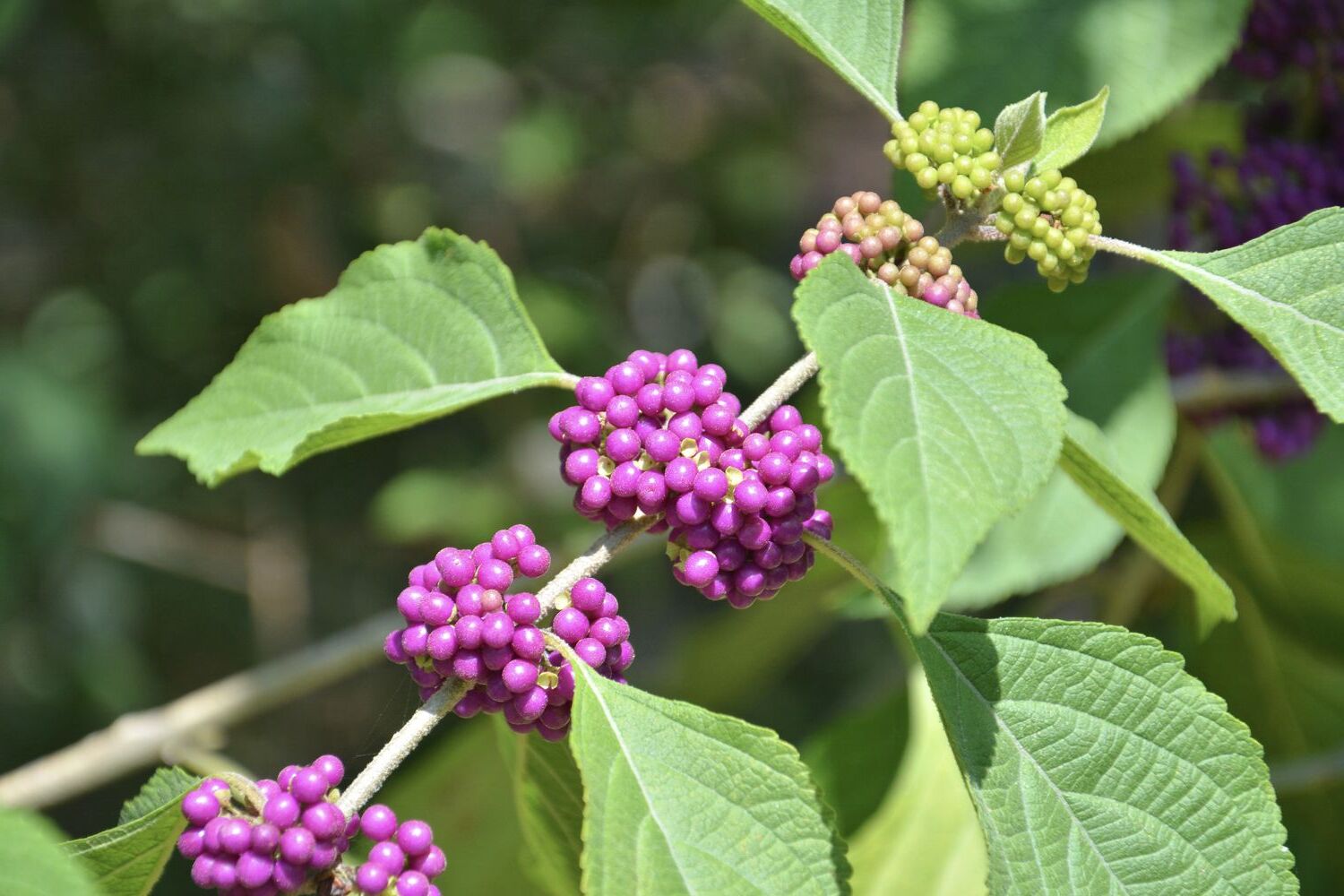
Callicarpa, commonly known as beautyberry, is a stunning plant that catches the eye with its vibrant purple berries. But there's more to this plant than just its good looks. Did you know that beautyberry has been used in traditional medicine for centuries? Its leaves can repel mosquitoes, making it a natural alternative to chemical sprays. This plant thrives in various climates, from the southeastern United States to parts of Asia. Callicarpa isn't just a pretty face; it's a hardy, versatile plant that offers both aesthetic and practical benefits. Whether you're a gardening enthusiast or just curious about nature, learning about beautyberry will surely pique your interest.
What is Callicarpa?
Callicarpa, commonly known as beautyberry, is a genus of shrubs and small trees known for their vibrant, colorful berries. These plants are often used in gardens for their ornamental value and wildlife benefits. Let's dive into some fascinating facts about this beautiful plant.
General Facts About Callicarpa
- Callicarpa belongs to the Lamiaceae family, which also includes mint and sage.
- The name "Callicarpa" comes from Greek, meaning "beautiful fruit."
- There are over 140 species of Callicarpa, found mainly in Asia, Australia, Madagascar, and the Americas.
- These plants can grow as shrubs or small trees, reaching heights of 3 to 10 feet.
- Callicarpa is deciduous, meaning it sheds its leaves annually.
Unique Features of Callicarpa
- The most striking feature of Callicarpa is its clusters of bright purple or violet berries.
- These berries appear in late summer and can last through winter, providing a splash of color in colder months.
- The berries are not only beautiful but also attract birds and other wildlife.
- Callicarpa leaves are typically green but can turn yellow or bronze in the fall.
- The plant produces small, pink to lavender flowers in the summer, which later develop into the iconic berries.
Uses and Benefits of Callicarpa
- Callicarpa is often used in landscaping for its ornamental value.
- The berries are a food source for birds, including cardinals, mockingbirds, and robins.
- Some species of Callicarpa have been used in traditional medicine to treat various ailments.
- The leaves of certain Callicarpa species can be crushed to repel mosquitoes.
- Callicarpa can be used as a natural dye, producing a range of colors from its berries and leaves.
Growing and Caring for Callicarpa
- Callicarpa prefers well-drained soil and can tolerate a range of soil types.
- These plants thrive in full sun to partial shade.
- Regular watering is essential, especially during dry periods.
- Pruning in late winter or early spring helps maintain the plant's shape and encourages new growth.
- Callicarpa is relatively pest-resistant but can be susceptible to root rot if overwatered.
Interesting Tidbits About Callicarpa
- The American beautyberry (Callicarpa americana) is one of the most well-known species in the United States.
- In some cultures, Callicarpa is believed to have protective properties and is used in rituals.
- The berries are mildly astringent and can be used to make jellies and wines.
- Callicarpa has been featured in various botanical gardens and plant collections worldwide.
- The plant's vibrant berries have inspired artists and photographers alike.
Conservation and Environmental Impact
- Callicarpa plays a role in supporting local ecosystems by providing food and habitat for wildlife.
- Some species of Callicarpa are considered endangered due to habitat loss and overharvesting.
Callicarpa is more than just a pretty plant; it's a vital part of many ecosystems and a versatile addition to gardens. Whether you're a gardener, a nature lover, or just curious, there's always something new to learn about this fascinating genus.
The Beauty of Callicarpa
Callicarpa, or beautyberry, is more than just a pretty plant. Its vibrant purple berries and lush green foliage make it a standout in any garden. But there's more to this plant than meets the eye. It's a wildlife magnet, attracting birds and pollinators, and its berries are even edible for humans. Native to Asia, Australia, Madagascar, and the Americas, Callicarpa is a versatile plant that can thrive in various climates. It's also known for its medicinal properties, used in traditional remedies for centuries.
Whether you're a seasoned gardener or just starting, adding Callicarpa to your garden can bring color, life, and a touch of history. Its low-maintenance nature makes it an excellent choice for anyone looking to enhance their outdoor space. So, next time you think about adding a new plant, consider the beauty and benefits of Callicarpa.
Was this page helpful?
Our commitment to delivering trustworthy and engaging content is at the heart of what we do. Each fact on our site is contributed by real users like you, bringing a wealth of diverse insights and information. To ensure the highest standards of accuracy and reliability, our dedicated editors meticulously review each submission. This process guarantees that the facts we share are not only fascinating but also credible. Trust in our commitment to quality and authenticity as you explore and learn with us.
